Introduction to Public Transport Guide in Tehran
In this article we want to introduce you to the public transport guide in Tehran.
This article is one of a series of articles on the HotelOneClick site, designed to provide travelers with more information about Tehran's tourist attractions.

In this article we will try to explain to you Tehran public transport guide with its details.
In this article you will learn about Tehran airports, Tehran railways, Tehran bus terminals, metro lines, BRT and taxis of the big city of Tehran.
- Why do dear tourists need to use public transport guide in Tehran?
- Getting to know Tehran Comprehensive Traffic Site
- How to use this site for selecting the location?
- How to use this site for routing?
- Suburban Transportation - How to get to Tehran?
- 1. Imam Khomeini Airport - Iran's largest airport
- 2. Mehrabad Airport
- What are the features and facilities of Tehran Railway Station?
- How to use of the ways entering the city with a personal car?
- How to use a private car in Tehran's main highways and streets?
- Major ways from north to south and vice versa
- Main highways from east to west and vice versa
- How many bus terminals are there in Tehran?
- 1. West passenger terminal
- 2. South Passenger Terminal
- 3. East bus terminal
- 4. Beyhaghi Terminal (Arzhantin)
- 5. Punak Terminal
- How is Tehran's Intracity Transportation?
- 1. Tehran Metro
- 2. Intracity buses
- 3. Intracity taxis
- 4. Using the motorcycle
- 5. Cycling and hiking
- How is the traffic restriction rule of Tehran in 2019?
- Conclusion
Why do tourists need to use public transport guide in Tehran?
Sightseeing in the metropolis of Tehran and seeing the tourist attractions of Tehran is relatively difficult due to the greatness of the city, the traffic, traffic restriction rules, and many other things and a mistake in route planning can result in wasting a lot of time.
Other than that, the high number of highways, bus routes, taxi and subway routes, and finding which part of the city each have access to, is another problem that you may find while traveling to Tehran.
If you have a well-planned trip to Tehran beforehand and know which vehicle can take you to your destination in a better way, you will save a lot of time and energy.
This will help you avoid both the tiredness of being stuck in traffic that can take several hours and you can also see more attractions in Tehran.
In addition, you can do more when traveling to the capital by choosing the right route and vehicle. HotelOneClick tries to give you a good overview of transportation in Tehran in a practical article.
In this article we are going to introduce you to different ways to reach Tehran and different ways of exploring it. Join us to find out more about transportation in Tehran.
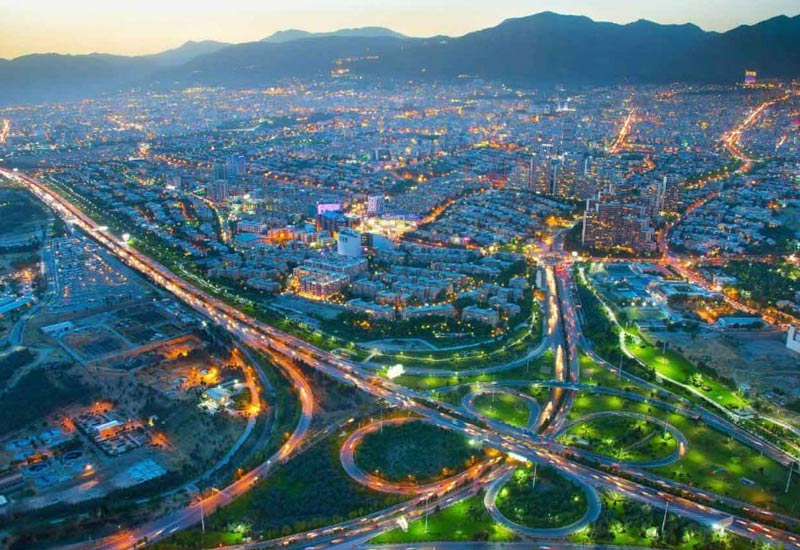
Getting to know Tehran Comprehensive Traffic Site: an easy tour of the capital
One of the most widely used websites recently available to the citizens of several cities such as Mashhad, Tehran and Isfahan, is a comprehensive smart transport traffic site that can be used with a few clicks, a variety of useful city information. Gained. We will learn more about this site and its services.
Click to use the Comprehensive Smart Transportation and Traffic Site.
The site is based on the map of Tehran and aims to provide all the important places for citizens and travelers, such as accommodation, bus stops, subways and taxis, all kinds of restaurants, gas and petrol stations, shopping malls and markets, historical and entertainment attractions and more.
In addition, this map can also help you navigate two points in the city and give you access from one point to another by bus, taxi, walking or biking.
Also by activating the traffic button, you can find out about the latest traffic and transportation situation in Tehran in a blink.
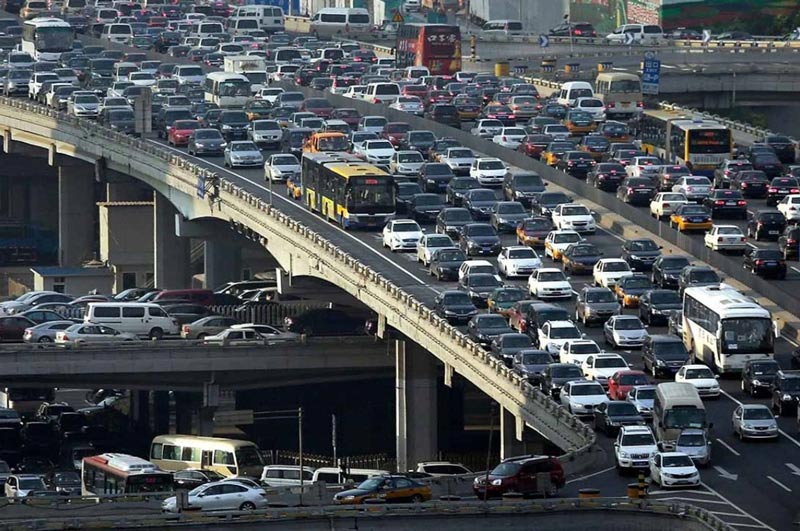
How to use this site for selecting the location?
If you want to find out about the location of various urban places and services such as restaurants, restrooms, ATMs ... just click on the Layers button at the top on the left.
In this section you will find different layers that you can access by clicking on each of them.
For example, if you click on the online button you will find three sub-categories of traffic, cameras and parkings. Clicking on the square will highlight their location.

Public transport guide in Tehran is an important tool in Tehran tourism. If you have not yet traveled to Tehran, you can select the hotels in Tehran by booking Tehran hotels.
How to use this site for routing?
To do this you need to use the top four colored icons shown with the names of bike, bus, taxi and car navigation.
You should know that these icons are displayed on your mobile screen in the top left and in the form of three horizontal lines. First, decide which of these vehicles you want to use to reach your destination.
Click on the same device. A card will appear in front of you with two Search boxes for departure and destination. To select the departure, a red pin with the letter A appears on the map.
Place and click this red pin on the point you want to move from. Your departure has been selected.
Now it is the time to choose the destination. A blue pin with the letter B appears on the map. Place this blue pin on the point you want to go to and click.
Your route is now clear. Tap the blue routing button on the card to determine the complete path in the right of the monitor. To reuse this feature, you must close the card and the path using the red cross and try again from scratch.
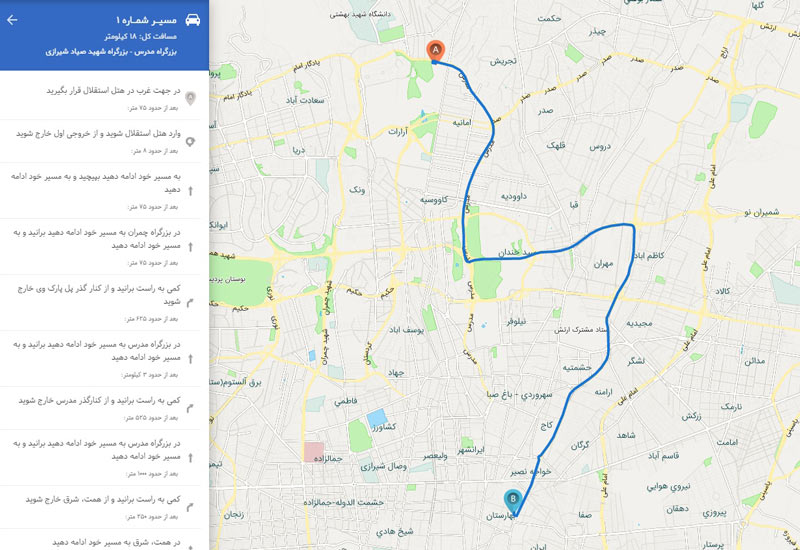
Suburban Transportation - How to get to Tehran?
There are various options to get to Tehran, in this section we will refer to the different airports, railways and roads of the country.
1. Imam Khomeini Airport - Iran's largest airport
Imam Khomeini International Airport, Iran's largest airport, is 30 kilometers from Tehran in 14,000 kilometers site and welcomes foreign travelers.
Imam Khomeini Airport is operated by the country's airport and airline companies like Iran Air, Mahan, Aseman, Qeshm, Caspian, Taban and Zagros serve passengers at the airport.
Phase one of Imam Khomeini Airport is currently active with a passenger terminal carrying 6.5 million passengers and one hundred twenty thousand tons of goods every year.
Of course, in 2015 more than 7 million passengers and in 2016 more than 8 million passengers were transferred from the airport terminal.
Phase two of the airport is also under construction. Imam Khomeini International Airport with the IATA code of (IKA) is known among the world's airports.
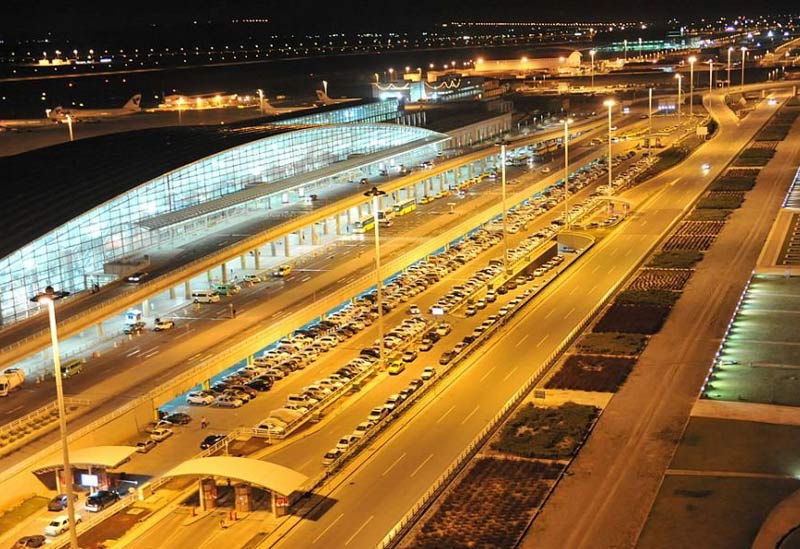
History
The construction date of this airport dates back to 1967.
Considering the great transit situation of Iran between Asia and Europe, ICAO offered to our country to take advantage of this by building a modern and well-equipped airport and becoming a Middle East flight center.
The decision was met with the approval of the authorities at that time and the airport was about to be rebuilt, but was delayed due to the Islamic Republic's revolution and the imposed war.
After the end of the war, the national authorities resumed the project until the first phase of the airport was opened in 2004 and put into operation.
Available facilities
Among the facilities of Imam Khomeini Airport are: parking; banks; currency exchange; luggage; freight packaging; emergency services; first aid; post service; tourist information center; free internet; departure tax payment center; consulting Iranians of other countries; considering the complaints; the quarantine unit; the border health center; the missing objects center; and the cargo section.
Other amenities at this airport are customs department, airline offices, freight offices, public transport, car rental, cell phone activation, hotel shuttle, cargo tracking, cargo packing, shuttle parking, airport taxi, hotels, business lounges, CIP services, hotels, shops, restaurants and cafes, special resting lounges, praying rooms and more.
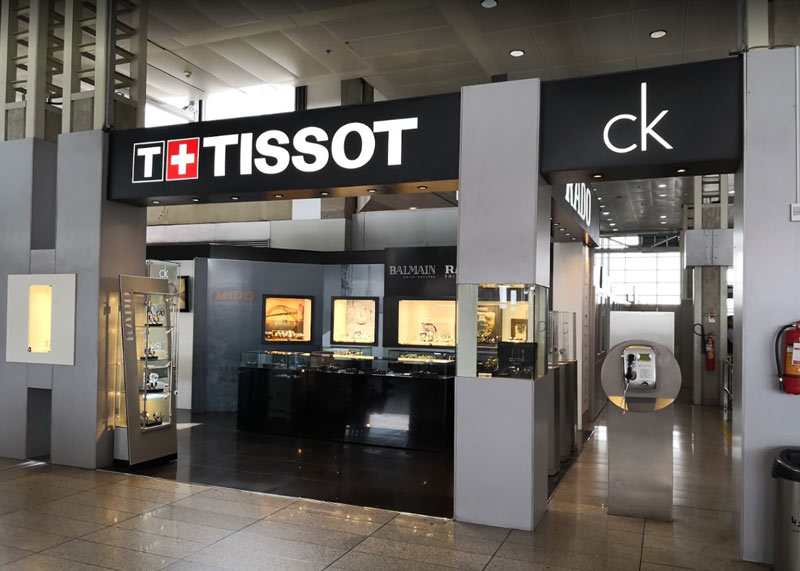
Flight destinations
Flight destinations are: Istanbul; Erbil; Stockholm; Izmir; Yerevan; Sparta; Athens; Orumchi; Astrakhan; Almaty; Amsterdam; Ankara; Barcelona; Bangkok; Baku; Baghdad; Berlin; Mumbai; Paris; Beirut; Tbilisi; Beijing; Dubai; Dusseldorf; Dusseldorf Damascus; St. Petersburg; New Delhi; Frankfurt; Doha; Copenhagen; Dushanbe; Cologne; Bonn; Sharjah; Kiev; Shanghai; Gothenburg; Kabul; London; Karachi; Moscow; Kuala Lumpur; Munich; Kuwait; Milan; Guangzhou; Minsk; Hamburg; Najaf; Vienna.
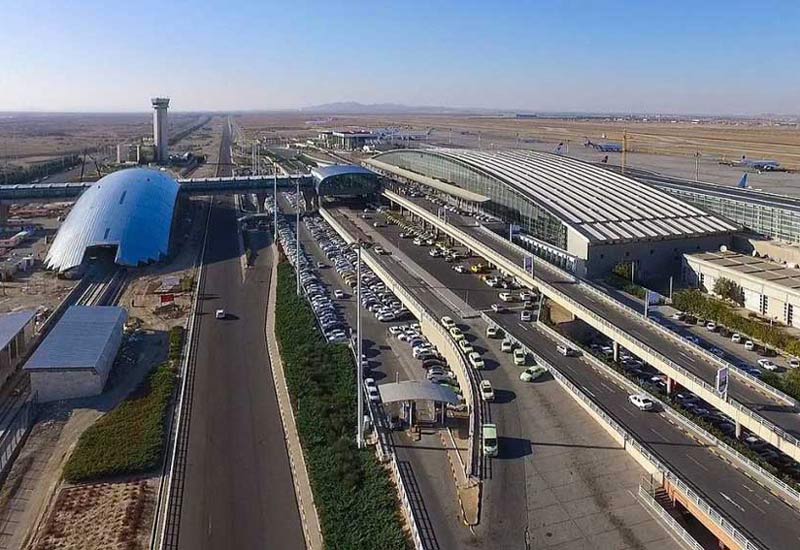
Public transport services from the airport to Tehran
You can get to Tehran using airport taxis or online taxis.
The Tehran Metro also connects Imam Khomeini Airport to Tehran by (Kahrizak - Tajrish Line).
To get to this metro you have to change the line in Shahed station and having crossed the Shahre Aftab Exhibition and Vavan Stations, you will get to the Imam Khomeini Airport Station.
Address: Thirty kilometers from Tehran, Tehran-Qom highway, Tehran,
2. Mehrabad Airport
The area where the current Mehrabad Airport is located was originally called Hossein Abad Village and later renamed Mehrabad.
Hossein Abad village was named Mehrabad after it was acquired as a dowry by Esmat al-Dowleh (Esmat al-Dowleh was the daughter of Nasser al-Din Shah Qajar and the wife of his friend Mohammad Khan Moir al-Mamalek), but they missed the village due to the misspending of Esmat al-Dowleh.
These lands remained unused for years until Mehrabad Airport was established in 1938 and was first opened to a military aircraft.
With the growth of Iran's aviation industry and our country's membership in the ICAO, Mehrabad Airport has become a suitable host for cargo and passenger aircrafts, and has for years been given the title of the busiest and most modern airport in the region.
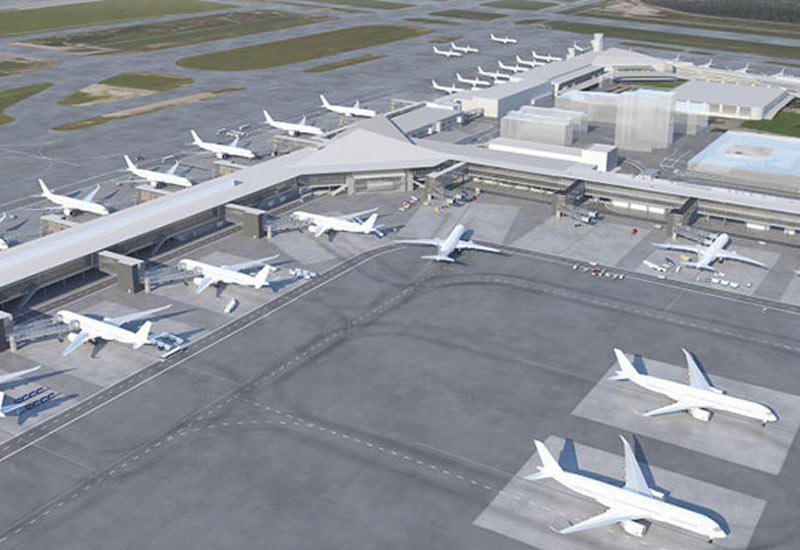
Today, Mehrabad Airport hosts 18 million passengers every year with 4 terminals. A flight watch tower, two airstrips and a taxi way operate the main flight operations at the airport.
Eastern and western aprons of Mehrabad currently has the capacity to accommodate about 50 medium-sized aircrafts and the three holding companies are responsible for transporting cargo and passengers from the terminal to flight levels and vice versa.
Of course, Mehrabad Airport handles most domestic flights.
Airport facilities
Mehrabad airport facilities includes mother & child Room, luggage control, restaurant & commercial booths, Missing Objects, ATMs, parking, exchange banks, restaurant & coffee shop, airport taxi, cargo packing, car rentals, airline offices, and more.
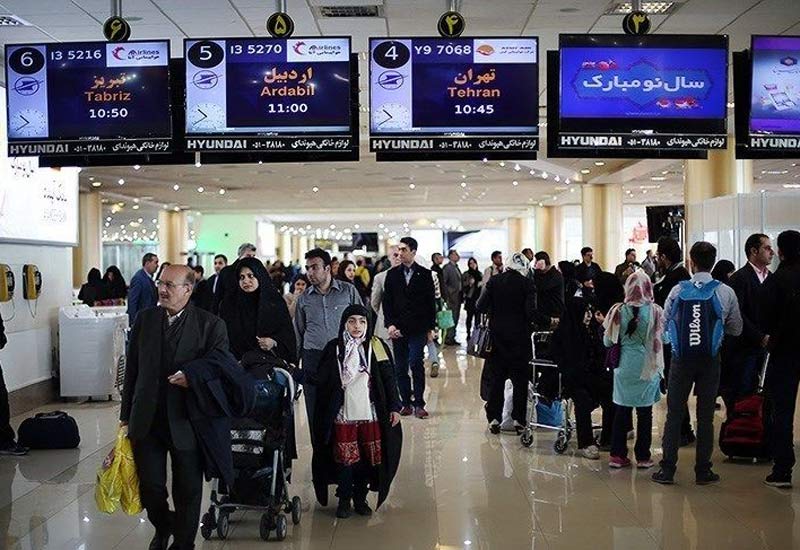
You can stay at Espinas Palace Hotel in Tehran for accommodation in Tehran as well as visiting the Persian Gulf. If you have not yet booked your hotel, you can book Espinas Palace Hotel in Tehran right now.
Public transportation services from Mehrabad airport to Tehran
You can use taxis inside the airport to get to Tehran. They take you anywhere in the city. You can book your taxi before your travel using this link.
Using Line 4 of the subway (Shahid Kolahdooz - Eram Sabz) you can reach at Mehrabad Terminal 1 and 2 and the station of Mehrabad Terminal 3 and 4.
- Address: Meraj Street, Azadi Square, Tehran
What are the features and facilities of Tehran Railway Station?
The railway station building was built during Reza Shah Pahlavi's era in the south of the Rah Ahan (railway) square.
The station is approximately 174 hectares and leads to the Sush street, Besat Highway and Rey street (Shahid Rajaei).
Its structure is of great architectural and historical importance and it has been listed in the National Monuments List of Iran in 2000 with the registration number of 3639.
The Tehran Railway Station building was inspired by ancient Iranian architecture.
It has a large entrance and a total area of about 30,000 square meters is allocated to the passengers’ station. The different sections of the station include waiting lounges, 5 passenger platforms, ticket booths and more.

Available facilities
Facilities at this railway station include ticket booths, parking lots, public transport, restrooms, praying rooms, car platforms, ATMs, wireless Internet access, lifts, ramps, public telephones, freight, post office, routes Specifically for the blind, food stands, snacks, crafts, books and hotel reservations.
Regulations
The Railway Station has put together a set of rules to make travelers and tourists as comfortable as possible:
- It is not allowed to bring ignescent, smelly, toxic and dangerous stuff to the station.
- It is not allowed to bring large packages and animals to the station.
- Providing a valid ID card for controlling the ticket is necessary.
- It is not allowed to enter platforms without tickets or confiscated tickets.
- The train doors are closed ten minutes before departure. Timely attendance at the station is essential.
- Avoid sitting and lying on the ground, stairs and passageways.
- Avoid accepting unsecured or suspicious devices and handing over your belongings to others.
- Smoking is prohibited in the halls, offices and offices.
- It is forbidden to remove cargo wheels from the station area.
Trains departing at least one hour after Azan have no promise of stopping for prayers. Visit the mosque or station praying room for saying your prayers.

You can stay in Tehran's Azadi Hotel to travel to Tehran and visit the largest artificial lake in Iran. If you haven't booked your hotel yet, you can book Parsian Azadi Hotel in Tehran right now.
Public transport services by railway to Tehran
There are various options for going to the city of Tehran from the railway station. Two large city bus terminals at the beginning of Kargar Street and the beginning of Valiasr Street (outside the railway station area) can take you to different parts of the city.
On the other hand, the Rah Ahan metro station on Line 3 (Ghaem-Azadegan Line) also provides good access to various locations of Tehran.
Online taxis and train station taxis can take you anywhere in the capital.
- Address: Rah Ahan Square, Tehran
How to use of the ways entering the city with a personal car?
If you want to experience a trip to Tehran by your car, you can use the following routes:
- From the west: Using the Tehran-Karaj and Shahid Lashgari highways (Special Road)
- From the southwest: Using the Tehran-Saveh highway
- From the south: Using Azadegan and Tehran-Qom highways (Khalij Fars highway)
- From the east: Using Tehran-Pardis highway and Tehran-Damavand freeway
- From the southeast: Using the Imam Reza (Mashhad) and Tehran-Varamin roads
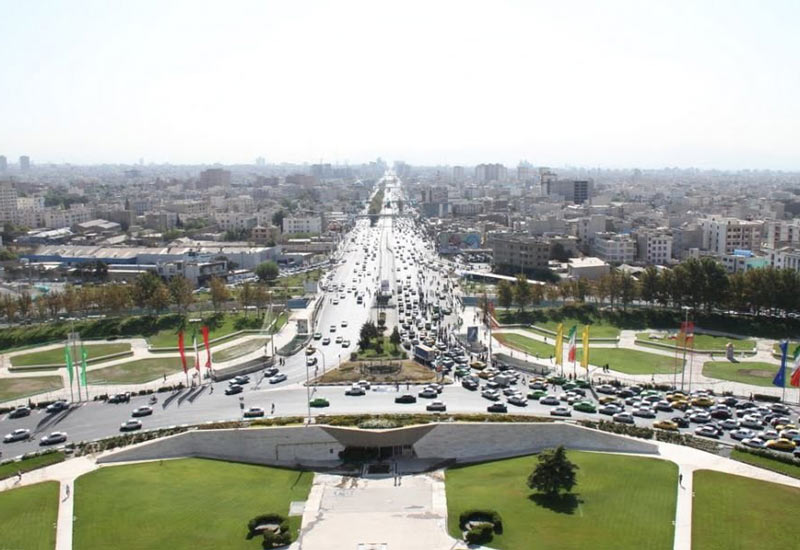
How to use a private car in Tehran's main highways and streets?
The vast Tehran is connected by a number of highways and intercity highways and long and important streets.
In this section, we want to introduce you to some of the capital's most vital highways to make your city transportation easier.
Major ways from north to south and vice versa
Major ways of the city from north to south and vice versa are:
1. Valiasr Street
The longest street in the Middle East that connects Tajrish Square in the north of Tehran to the Rah Ahan Square in the south of the city.
Most parts of this street are one-way to the north of the city. The BRT Line of Tajrish-Rah Ahan connects the various parts of this street.
2. Imam Ali Highway
One of the most important and new highways of Tehran in the eastern part of the city. The 35km highway starts from Darabad in northeast Tehran and reaches the Rey city in the southeast.
There are a number of Line 9 bus stops on this highway.
3. Azadegan Highway
This highway connects northwest of the city to its southeast. Azadegan highway starts from Dehkadeh Olampik and ends in Afsariyeh intersection.
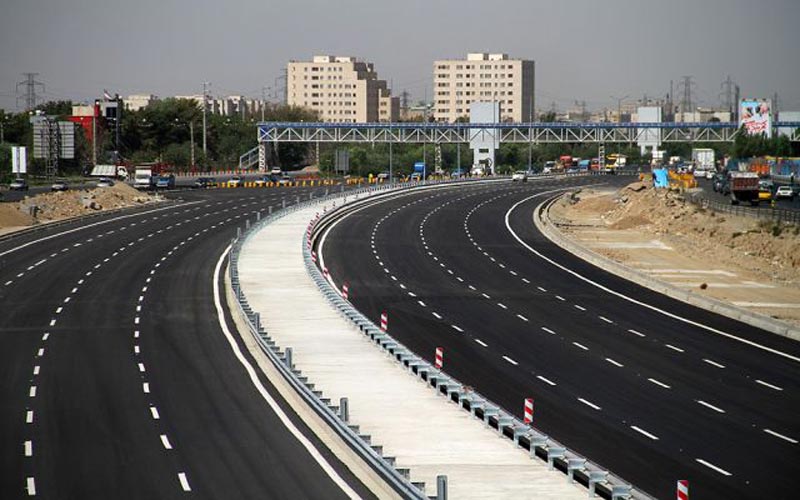
4. Chamran Highway
The 11.5km highway, which begins at the intersection of Parkway in northwest of Tehran and ends in the Sattarkhan neighborhood in Tohid Square. Line 4 of BRT bus stops connects different parts of the highway.
5. Ashrafi Esfahani Highway
The highway starts from the west at Sadeghieh Square and ends in Punak Square at the intersection of Simon Bolivar. Line 10 of the BRT buses connect the different parts of this highway.
6. Modarres Highway
It is one of the oldest highways in Tehran and is 9 km long. The beginning of the highway is in Parkway and the end of it is Haft Tir Square.
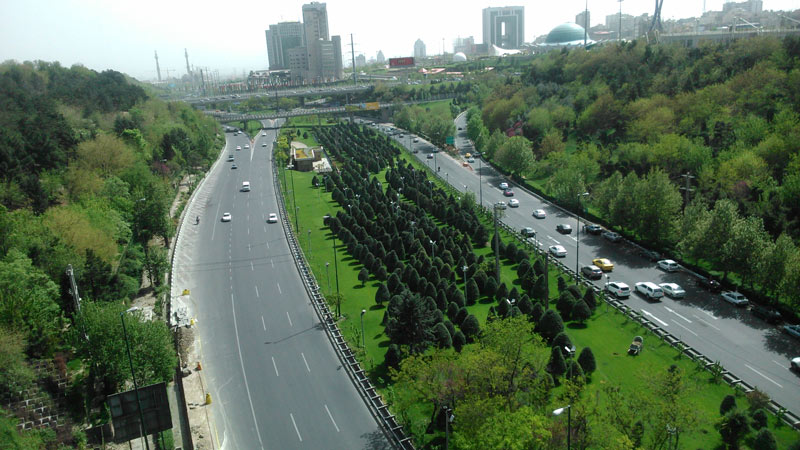
7. The Bakery Highway
One of the main communication routes of Tehran starts from Hesarak in the northwest and ends in Tehran-Karaj freeway in the west.
8. Sattari Highway
The beginning of this highway is Shahrak Ekbatan in west of Tehran and continues to Hesarak and Islamic Azad University of Science and Research Branch.
Main highways from east to west and vice versa
Main highways of Tehran from east to west and vice versa are:
1. Shahid Hemmat Highway
It is the main communication route from East to West and West to East in Tehran. Hemmat highway starts from Shahid Zeynoddin highway on the east and ends in Kharazi highway on the west.
2. Hakim Highway
One of the main routes of Tehran stretching 9 kilometers along the Hemmat highway. The starting point of this highway is the west of the Allameh Ja'fari Bridge and extends to the Resalat Tunnel on the east.
3. Shahid Babai Highway
The highway stretches from northeast of Tehran and with its 17 km to the east connects Shahid Sadr Highway to Shabdari intersection and Ab-Ali intersection (Tehran-Damavand freeway).
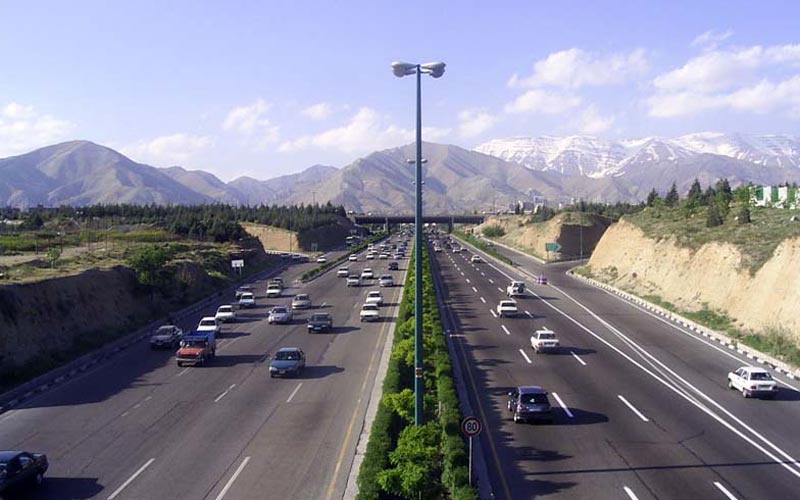
4. Hashemi Rafsanjani Highway (Niayesh)
It is one of the main highways in Tehran and its route starts from Valiasr Street, south of Mellat park and ends in Abshenasan Highway. The Tunnel of Niayesh connects this highway to Sadr Highway.
5. Resalat Highway
The 12km Resalat highway is the main east-west highway of the eastern part of Tehran. The road starts from the Resalat Tunnel and ends in Abali Road in Tehranpars. This highway is the continuation of the Hakim Highway.
How many bus terminals are there in Tehran?
In addition to the airport and the rail line, various road routes pave the way to Tehran by private cars and intercity buses.
Tehran has five bus terminals namely West Terminal, South Terminal, East Terminal, Beyhaghi Terminal and Punak Terminal which are the departure and destination of buses, minibuses and intercity taxis.
Of course, a new terminal is also being built near Sorkheh Hesar in the east, which has not yet been put into operation.
1. West passenger terminal
The most famous bus terminal of Tehran is near Azadi Square. It is the largest terminal in the country and was opened in 2007 in an area of 50 hectares.
The West Terminal has two floors, the lower floor is dedicated to passenger transfer companies and commercial booths and the upper floor is dedicated to terminal management offices and passenger companies.
Due to its strategic location and close proximity to the four highways of Mohammad Ali Jennah, Sheikh Fazlollah Nouri, Baradaran Shahid Rahmani and Lashkari Highway (Karaj Special Road), the West Terminal has made it easy for buses to cross the country.
There are buses from this place to most parts of the country like the northern, western, central and southern provinces.

Available facilitie
Facilities at the terminal include: stores; a park; a mosque; cargo automation; passenger terminal radio; insurance office; newspaper reading station; a parking lot; facilities for the disabled like ramp and wheelchair; repairing complex; gas station; car park; car wash; bodybuilding club; sauna and jacuzzi; driver's residence; ATMs; bank services; library; mother and child room; clinic and terminal information unit.
Other features of this terminal include telephone, Interactive Voice Response, Ministry of Roads representative office, park for children, intercity taxies, men's and women's restrooms, public telephone, drinking water, internet cafes, hairdressers, mobile charging stations, height and weight measuring devices ...

You can stay in Tehran's Grand Hotel to travel to Tehran and visit the largest artificial lake in Iran. If you haven't booked your hotel yet, you can book Tehran Grand Hotel right now.
Public Transportation Services from the West Terminal
The West Terminal is located near the taxi terminal and the bus station of the Azadi Square and from this part to almost all parts of Tehran there are taxis, metro, BRT buses and private buses.
Get to what you want with a little searching.
Azadi Square metro station on the metro line 4 of (Shahid Kolahdooz-Eram) can connect you to Tehran underground transportation system.
Alongside these, taxi services are available 24 hours a day at the West Terminal, which can take you anywhere in Tehran.
Address: Northwest of Azadi Square, Tehran
2. South Passenger Terminal
The South Passenger Terminal, is Tehran's second largest and most famous and oldest terminal. The south passenger terminal is built on three floors and covers an area of 17 hectares.
The first floor includes business booths and travel co-operative offices, the second floor includes restaurants, computer sites, Army Forensic Offices, Naja and Sepah, and the third floor includes administrative departments, terminal management, the office of Ministry of Roads and more. About 20,000 people come to the terminal every day to get a ticket, get on a bus, and so on.
The terminal building was designed and built by foreign engineers in a circular design. Its design is such that no smoke or dust can be emitted indoors despite being in a crowded area.
The southern terminal is located on the northern part of the Besat highway and is the first fully equipped construction terminal in Tehran.
It reaches Shahid Taghavi Street from the north, Besat highway from the south, Shahid Bokharaei Street from the west, and Abbasi Street from the east.
Currently, this terminal is available to all parts of the country except the provinces of Mazandaran, Gilan, Kurdistan, Kermanshah and West Azarbaijan.
Passengers can also travel to Iraq, Turkey and Syria using the services available at the south terminal.
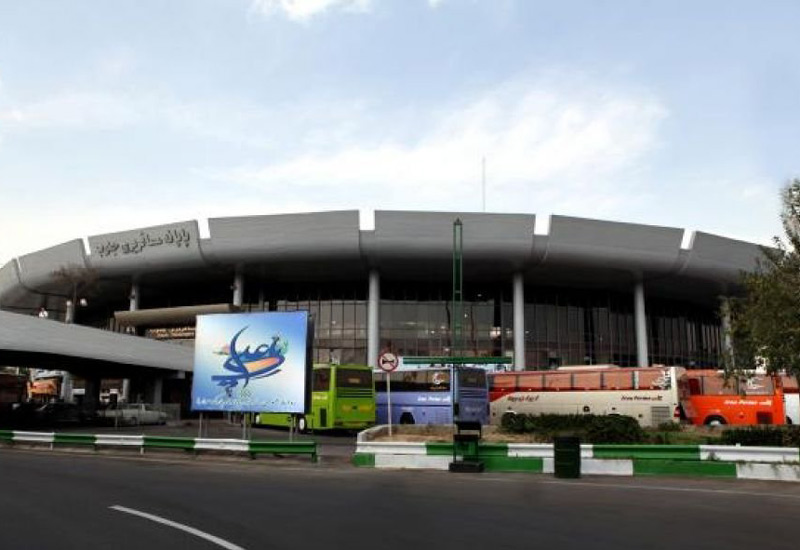
Available facilities
Available facilities are: parking with the capacity of more than 750 cars; book booths and cultural products; mother and child room; confectionery; snacks; city bank; saltwater large aquarium; seven ATMs; police station; social service office; clinic and emergency services; restroom; bank services; drinking water; hot and cold food; restaurant; laundry; spare parts shops; traditional teahouse; coffee shop; praying room; 2500 square meters of green space; travel agency.
South Terminal Public Transport Services
Near the south terminal there is the Beat urban passenger terminal, which can take you to specified destinations with BRT line of (Afshar-Besat terminal), several minibuses and inter-city buses.
There is also a taxi terminal near the south terminal that covers a number of urban destinations. The South Terminal metro station on the line 1 of (Kahrizak-Tajrish) can connect you to the underground transportation system.
Address: South of Besat Park, Besat Highway, Tehran
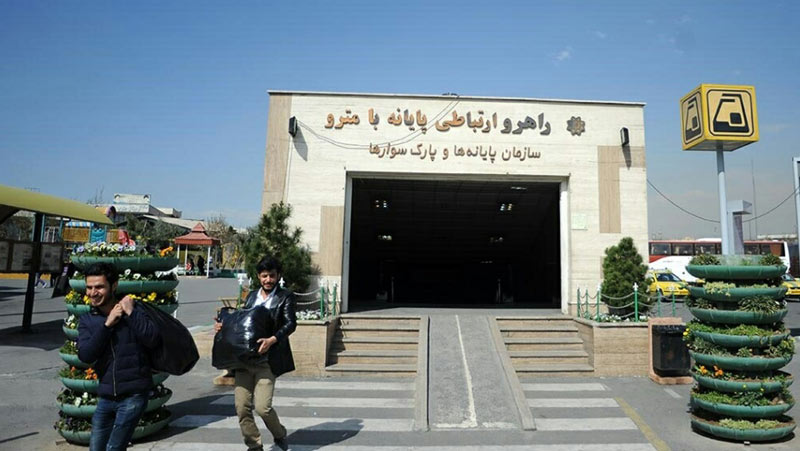
3. East bus terminal
East Terminal was opened in 1981 in an area of about 5.3 hectares.
East Terminal is located in Tehranpars area and leads to Damavand Street from the north, Shahid Yassini Highway from the south, BRT bus stop from the east and Attar Park from the west.
The terminal accommodates 9 bus companies, 3 minibus companies and 6 taxi companies.
From the East Terminal you can travel to 33 cities such as Arak, Amol, Isfahan, Babol, Babolsar, Bojnourd, BandarTurkaman, Sari, Gorgan, Mashhad, Yazd, Qom, Semnan and more.
Available facilities
Available facilities are: Mother & child room; praying room; mosque; information stand; interactive voice response of the terminal; 24-hour emergency services; restroom; ATM; Gym; book city; gas station; gasoline station; taxi service; office of ministry of transportation; drinking water; health house; waiting lounge; police station; army guards; public telephones; pavilions; hot and cold food store; fire station; snack shop; parking.

East Terminal Public Transportation Services
If you want to get to one of the different areas of Tehran from here, you can also get help from the official terminal taxi services or city taxis. The Tehranpars-Azadi BRT Line could also be another choice to reach different areas.
Address: Tehranpars Road, end of Damavand Street, Tehran
4. Beyhaghi Terminal (Arzhantin)
The terminal was opened in 1991 on a 13.5 hectares’ land with a capacity of 2000 cars in the Arzhantin square.
In this ride terminal, 8 travel agency companies have made it possible to travel to the cities of Isfahan, Ahvaz, Mashhad, Rasht, Khorramabad, Arak, Hamedan, Tabriz and the three countries of Iraq, Turkey and Syria.
Available facilities
This terminal has facilities like mosque, travel agency, cargo automation, offices for selling tickets, mother and child room, passenger waiting lounge, ATM, public telephones, libraries, health house, restaurants, grocery stores, cold and hot food, a snack shop, Shahrvand shopping mall, laundry, courier service, technical car examination center and traditional teahouse.
Other amenities include: ramps for the disabled; wheelchairs; drinking water; park for children; parking; agents of Ministry of Transportation; insurance services offices; heating and cooling systems; bus terminals; benches; coffee shop; taxi office representative of Tehran; mechanic services and car wash.
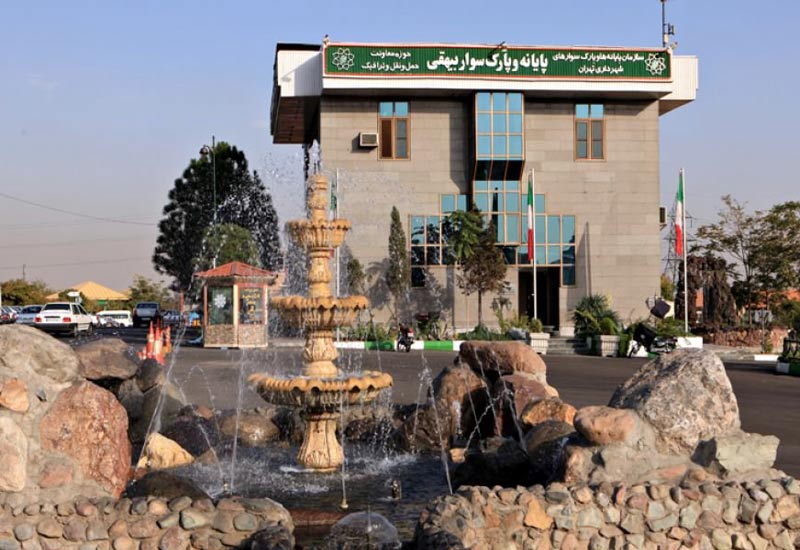
Public transport services of Beyhaghi terminal
Nearby the Beyhaghi terminal is the Beyhaghi Urban Terminal, from where you can access various parts of the city. In addition, official taxis of the terminal can take you anywhere in the city.
Address: East of Arzhantin Square, Afrigha Street, Tehran
5. Punak Terminal
Punak is another Terminal that transports passengers to Guilan Province. Services include car insurance, travel tickets, and carwash services.
- Address: Sardar Jangal intersection, Mirzababaie Boulevard, Punak Square.

How is Tehran's Intracity Transportation?
Tehran's intracity transportation system is very extensive and includes the subway, bus, taxi, online taxi and cycling.
1. Tehran Metro
Tehran's largest intracity transport network belongs to the Tehran subway.
This network with 7 lines 6 lines of which are currently active has been able to connect many parts of Tehran.
The first Tehran metro line would connect Sadeghieh Square to Karaj.
Subsequently, various stations were opened and the Tehran subway expanded.
Tehran Metro website provides useful information, software, maps and news about this efficient and useful urban system.
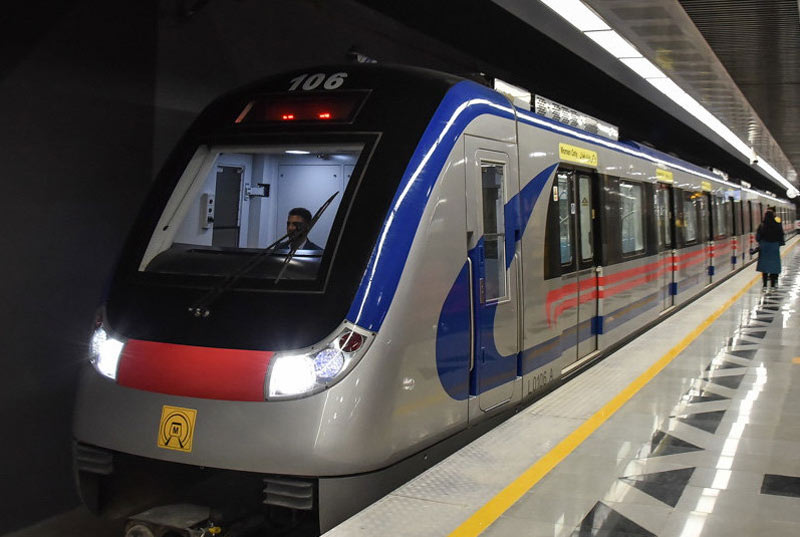
Types of subway tickets
One-way ticket: with this ticket you can only use the subway once.
Of course, if you plan to take a round trip, you need to buy two of these tickets.
Chargeable Ticket (Electronic Ticket): You can use the subway as many times as you need and charge your tickets. The way to determine the cost of these tickets is that they are calculated in kilometers of your distance traveled.
Note that you cannot re-use your card for up to half an hour.
Subway lines
The Tehran subway has several lines that connect different parts of the city and make it easy for commuters to move around the city. Here's the directions for these lines:
Line 1
This line starts from Tajrish in north of Tehran and ends in Kahrizak in south of Tehran.
The color of this line is red and has connections with line 3at Shahid Beheshti station, with line 4at the Darvazeh Dowlat station and with line 2 at Imam Khomeini Square station.
Line 1 can also can be used to reach Imam Khomeini Airport.
Line 2
This line starts from Sadeghiyeh in west of Tehran and finally reaches the Farhangsara station. The color used for this line is dark blue and it is connected to the Karaj metro from Sadeghiyeh station.
The line connects to line 4 in Shadman and Darvazeh Shemiran stations, to line 6 in Navab Safavi station and to line 1 in Imam Khomeini station.
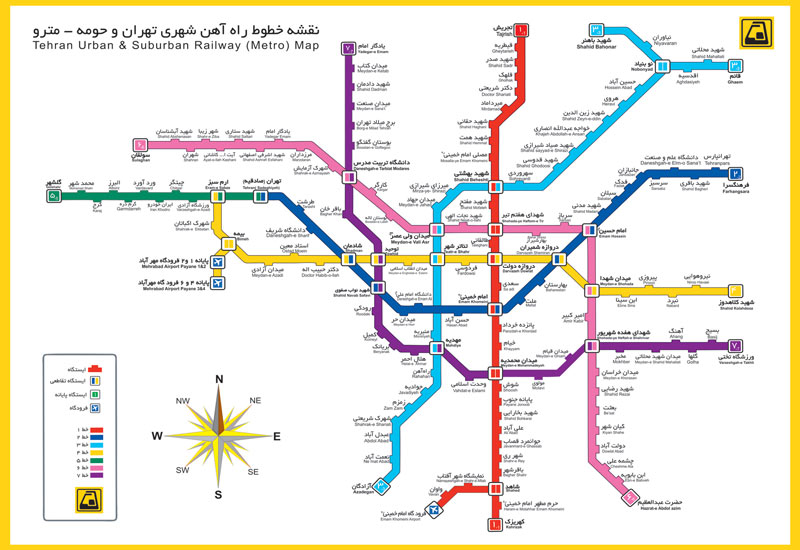
Line 3
This line starts at Azadegan Station in south of Tehran and reaches Qaem station in northeast of Tehran. The color used in this line is light blue and is the longest metro line in the Middle East.
This line is connected to Line 1 at Shahid Beheshti Station, Line 6 Mahdieyeh Station and in Line 4 with City Theater Station with.
Line 4
This line starts at Eram Green Station in west of Tehran and ends at Kalahdouz Station in east.
The color used for this line is yellow and it is connected to Darvazeh Dowlat Station with line1, Darvazeh Shemiran and Shadman Station with line 2 and City Theater station with line3.
You can also access Mehrabad Airport using this line.
Line 5
This line starts from Sadeghiyeh in Tehran and reaches Golshahr station in Alborz province. This line connects to Eram Green Station with line 4 and Sadeghiyeh Station with line 2.
Line 6
The newly opened subway line has only three stations, taking you from Shohada Square to Besat Station. The color of this line is pink and you can continue on line 4 (Eram Sabz-Shahid Kalahdouz) at Shohada Square Station.
Line 7
This line starts at Navab Safavid Station and having passed the Rudaki, Komeyl, Beryanak and Helal Ahmar stations reaches Mahdiyeh Station.
Many stations of Line 7 have not yet been opened and are under construction. This line is connected to Navab Safavi Station with line 2 and Mahdiyeh Station with line 3.
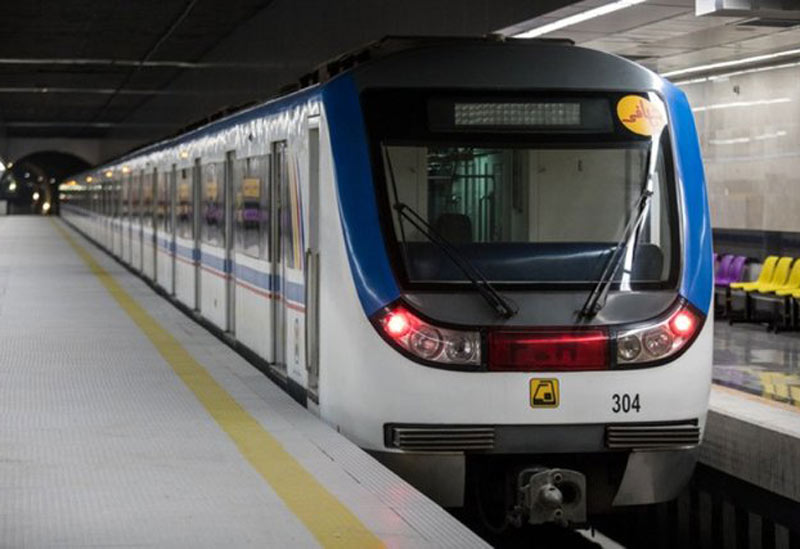
You can stay in Parsian Esteghlal Hotel to travel to Tehran and visit the largest artificial lake in Iran. If you haven't booked your hotel yet, you can book Tehran Esteghlal Hotel right now.
Mehrabad Airport Line
Mehrabad Airport Line is the line 4 of the Tehran Metro that diverges from the Bimeh Station and has two stations.
The station of Terminal 1 and 2 of Mehrabad Airport and the station of Terminal 3 and 4 of Mehrabad Airport which provide access to various parts of the airport.
Imam Khomeini Airport Line and Parand City
Imam Khomeini Airport Line is the secondary line of the Tehran Metro Line 1 and departs from the Shahed-Baghershahr station.
This line includes the Shahr Aftab Exhibition Stations, Vavan, Imam Khomeini Airport and Parand city.
2. Intracity buses
The bus is one of the best options for intracity trips to Tehran. Multiple BRT bus lines and private buses connect all parts of Tehran.
Tehran's city bus system is very extensive and many bus lines also serve cities around Tehran.
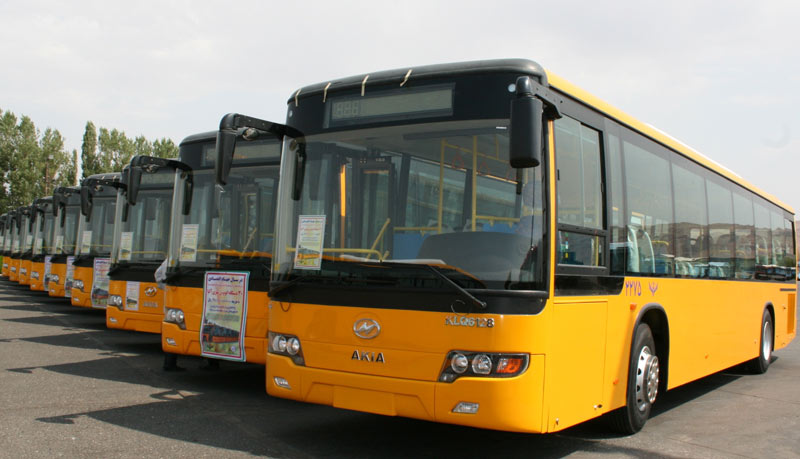
Departure time of the buses
One of the good services of the municipality of Tehran is in the arrangement of the city buses by installing (GPS) on the buses and specifying the arrival and departure times for each bus.
You can obtain this information by using the screens installed at many stations.
Tehran BRT lines
Tehran BRT has launched 10 lines across the city to make it easier for passengers to travel, which has played a huge role in the reducing city traffic.
Line 1
Azadi Terminal, Ostad Moein, Sharif University, Navab Sharghi, Enghelab Square, Valiasr Crossroad, Darvazeh Dowlat, Shariati, Imam Hossein, Sabalan, Ayat, Khaghani, Tehranpars
Line 2
Azadi Terminal, 30 Metri Jey, Shamshiri Square, Imamzadeh Masoum, Razi Square, Valiasr, Khayyam, Molavi Crossroad, Khorasan Square, Atabak, Khavaran, Farhangsaraye Khavaran, Khavaran Terminal
Line 3
Khavaran Terminal, Basij, Ahang, Mahallati, Pirouzi, Nirouye Havaei, Ayat, Nabovat Square, Sar Sabz, Elm-o-San’at Terminal
Line 4
Afshar Terminal (Parkway), International Exhibition, Pol Modiriat, Molla Sadra, Kuy Nasr, Tohid, Azadi, Azarbaijan, Helal Ahmar, Javadiyeh, Bahman Square, Shahid Rajaei, South Terminal
Line 5
Bayhaghi Terminal (Arzhantin Square), Mosalla, Seyed Khandan, Kerman, Resalat, Elm-o-San’at Terminal
Line 7
Tajrish Square, Bagh Ferdows, Mahmoudieh, Parkway, Mellat Park, Mirdamad, Vanak Square, Tavanir, Abshar, Pelleh Aval, Beheshti, Motahari, Valiasr Square, Taleghani, Valiasr Crossroad, Monirieh, Molavi, Mokhtari, Rah Ahan Square
Line 8
South Terminal, Besat Park, 17 Shahrivar, Shahrak Shahed, Shahrak Boroujerdi, Khavaran Terminal

Line 9
Subway Terminal of Javanmard Ghassab, Namaz Square, Deylaman, Ghayouri, Shahid Torab, Shahid Boroujerdi, Atabak, Khavaran, Mahallati, Pirouzi, Damavand, Madani, Farjam, Golshan, Ozgol, Mini City, Ghaem, Laleh Terminal
Line 10
Azadi Square, Sadeghiyeh, Marzdaran, Bagh Feyz, Tirazheh, Punak, Taleghani, Ashrafi Esfahani, Mokhaberat, Research and Sciences University Terminal
Other important Tehran bus system
The municipality of Tehran also uses other bus systems to transport citizens, which you can see below:
Line 6
Afshar Terminal (Parkway), Elahiyeh, Afrigha, Qeytarieh, Ekhtiariyeh, No Bonyad, Golchin, Ozgol, Mini City, Mahallati, Abuzar, Kuy Yas, Laleh Terminal
Transportation system for the Disabled
People with disabilities can also use their own transportation system every hour of the day by calling 6305.
Night lines
The Municipality of Tehran has established 12 night lines for transportation from 9:40pm to 5:20am. You can find out the exact time and route of these lines by visiting here.
3. Intracity taxis
Taxis in Tehran are divided into four groups operating directly under the monitoring of municipality.
In total, there are 46 taxi terminals in the 22 districts of Tehran that carry out inter-city trips at the rate approved by the municipality and the routes specified by the organization.
There are, of course, a number of taxi terminals that take passengers to cities around Tehran.
Shared taxis with non-specific routes
These taxis are marked with yellow and orange lines and have no definite origin or destination.
These taxis go freely in different streets and their cost is determined by a taxi meter.
Shared taxis with specific routes
These taxis come in yellow or green and include passenger cars and vans. These taxis must have the logo of their taxi company and their departure and destination on their front door.
The cost of these taxis is fixed and predetermined.
Tele-taxis
The color of these cabs is yellow with black checkered strips or flashy green with black checkered strips. These cabs must be equipped with a telephone cab sign on the roof and a wireless device. Their dispatch is based on the citizens' request and proximity to the individual.
Their cost is also calculated based on the taxi meter.
These taxis are not allowed to work as a shared taxi in the city.
Women's taxi cabs are also one of the kinds of these cabs. These taxis are for women only and have no right to do other activities.
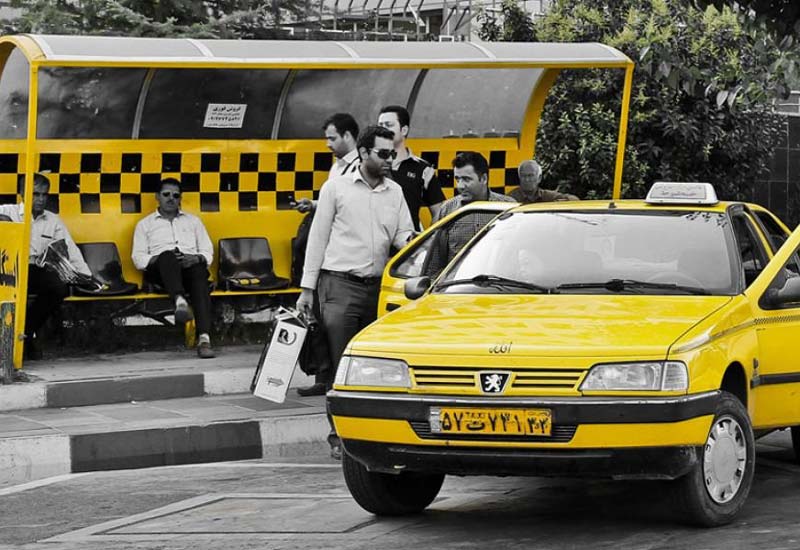
Special taxis
Special taxis provide services to clients and staff of specific agencies or departments or designated city and state agencies.
Types of taxis include: special office taxis such as railroads; airports; terminals; station-specific taxis such as hotels; hospitals; business centers; and special taxis for agencies and organs.
The cost of taxis for special and stationary offices is calculated on a taximeter basis and has an entrance fee, but the cost of special taxis for offices and agencies is predetermined.

Online taxis: A cheap trip in an expensive city
One of the best services of the past years in the field of cyberspace is the online taxi service that can get you anywhere at a reasonable cost.
You can easily travel to expensive and crowded cities like Tehran by using the apps of different companies that provide taxi and transportation services.
To use these taxis, you need to download and install their software from online stores and get the services you need by registering and entering your information.
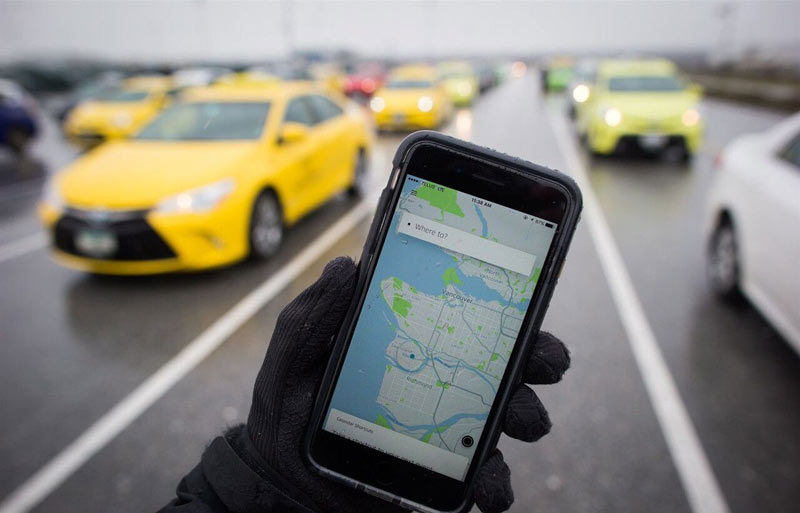
Apps, a new way to pay for taxis
One of the latest payment methods in taxis in Tehran is the online payment apps.
By installing these applications on your smartphone, you can pay for taxi fares online without having to pay cash using your account saved money (by the special app).
All you need to do is to install a taxi payment app, scan the taxi barcode you have taken and connect to your taxi driver account.
After making sure about the taxi driver's information, matching his face and phone and car specifications, pay your fee with just a few clicks.
Not all city taxis are yet equipped, but this type of fee payment is growing rapidly.
4. Using the motorcycle as a means of transportation and goods carriage
The transfer of small goods in Tehran is relatively difficult due to the high traffic jam of the city. Many people use motorcycles in heavy traffic or when they want to carry their light and small loads across the city quickly.
As you tour the capital, you will quickly find out how much this device is used by companies, individuals, restaurants and offices, and gets things done quickly.
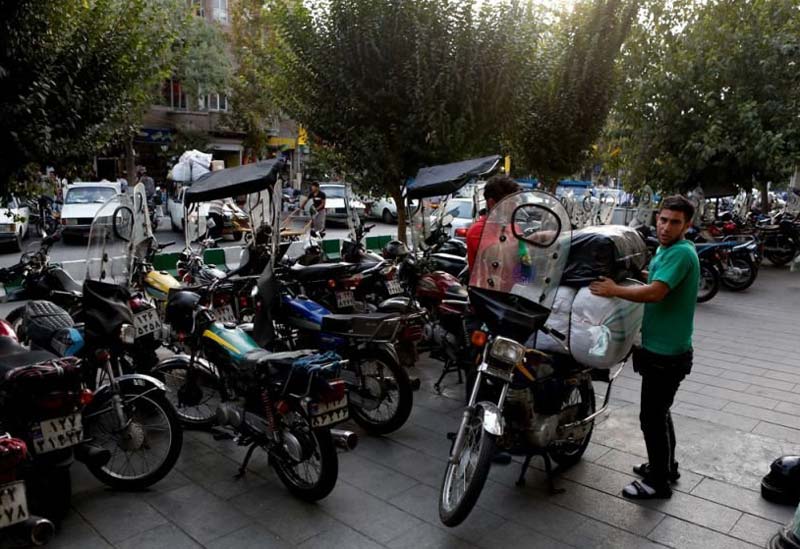
Tehran Bazaar, Baharestan Square, Tajrish Square, Rah Ahan Square, Valiasr and Vahdat Eslami Streets, Imam Khomeini Square and many streets and city squares are the most popular places for motorcyclists.
Be aware, however, that when using this vehicle and for transportation, be sure to warn them to go only to specific routes and only with helmets.
Failure to do so can result in the suspension and fine of the motorcycle and delay of your work.
Online motorcycle - Cheap and fast transport
Along with online taxis, online motorcycle apps and software have also grown a lot. With these apps you can move your packages at a reasonable price and at a high speed across the city.
You can stay in Tehran's Ferdowsi Hotel to travel to Tehran and visit the largest artificial lake in Iran. If you haven't booked your hotel yet, you can book Tehran Ferdowsi Hotel right now.
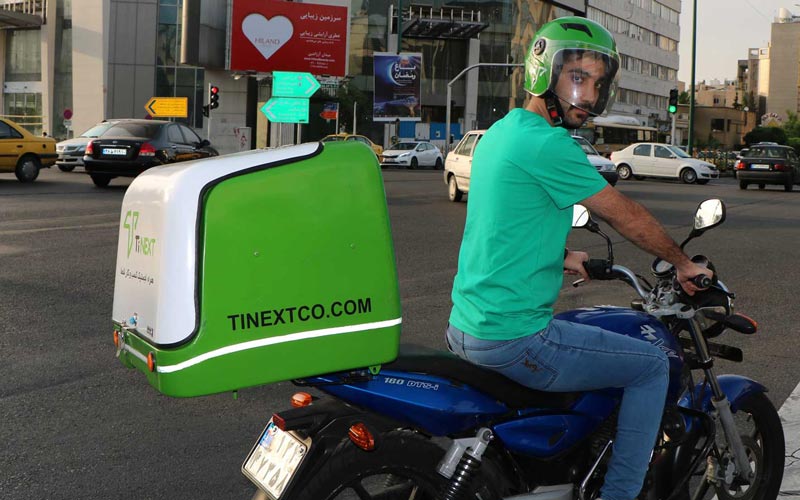
You can stay in Tehran's Hoveizeh Hotel to travel to Tehran and visit the largest artificial lake in Iran. If you haven't booked your hotel yet, you can book Tehran Hoveizeh Hotel right now.
5. Cycling and hiking - Tehran is a car-friendly city not a pedestrian- friendly city
While cycling and hiking are one of the most attractive and effective ways to reduce traffic and air pollution, they have not yet developed a lot in Tehran.
Of course, the city parks, especially the Velayat Park, Laleh Park, Chitgar Garden, Abo Atash Parks, etc.
have special bike lines and bike rental kiosks, but the equipment is not extensively and comprehensively spread in the city.
On the other hand, many of the capital's streets are not yet suitable for walking, and there is no proper urban furniture.
Simply put, Tehran is a car-friendly city, not a pedestrian-friendly city, and people who like to walk from one place to another face many problems.
However, parts of Valiasr Street, Keshavarz Boulevard, Fath Square, etc. have been adapted to some extent for walking.
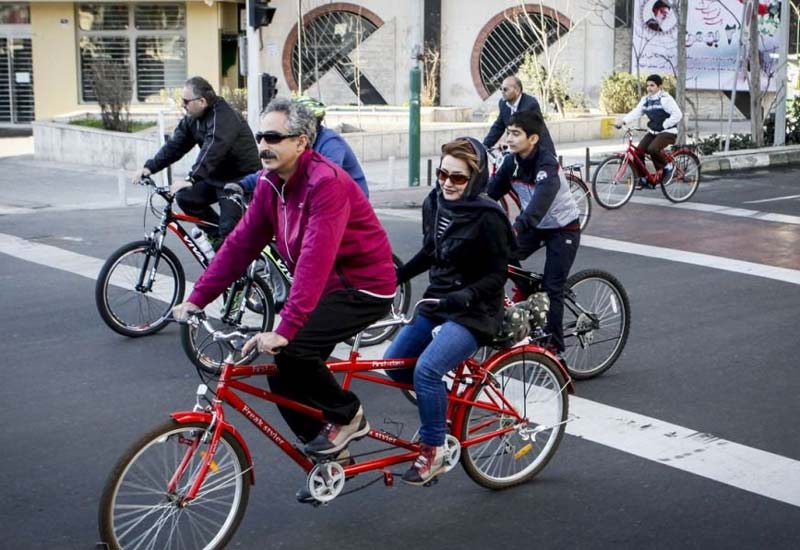
How is the traffic restriction rule of Tehran in 2020?
The Tehran traffic plan is implemented in the central area of the city like every year.
This year it is also planned to be in the former Traffic restricted area (the traffic plan will go from Fatemi Street and Motahari Avenue to Shariati Street, from the west to Kargar Street, from the East to 17 Shahrivar Street, and from the south to Sush Street).
It is called the first or the green zone.
Another change to this year of Tehran Traffic Plan is the removal of the odd and even days’ plan from July 2019, and the Air Pollution Control Plan is to be implemented in place of the former odd and even days Plan and be called the blue zone.
Keep in mind, however, that the instructions and boundaries or the hours and costs of each of these plans may vary.
So be sure to listen to the news before going somewhere.
To accommodate in Tehran and visit the largest artificial lake in Iran, you can stay at Ibis Hotel or Novotel in Tehran. If you have not booked your hotel yet, you can use HotelOneClick booking page to reserve any hotel in Iran.
Conclusions on Public Transport Guide in Tehran
Today, we toured the city with you and learned more about the different ways to visit and explore the city.
We obtained information about airports, bus terminals, railways, public transport systems and traffic restrictions in the capital.
What do you think about different ways of sightseeing in Tehran?
Which way do you use the most to reach this city?
To what extent can the Tehran Public Transport Guide be useful for tourists?
If you have been in Tehran before and have used public transport, which of the following do you think is the most efficient Tehran transport system? Why?
Share your thoughts, suggestions and experiences with us and your friends at HotelOneClick.
Our references to prepare Tehran Chitgar Lake Travel guide:
we have used many references to prepare this article. They are some of them in the following:
- Comprehensive Smart Traffic and transportation Site
- Imam Khomeini International Airport
- Mehrabad Airport
- Tehran Railway
- Tehran subway
- Tehran city bus system
